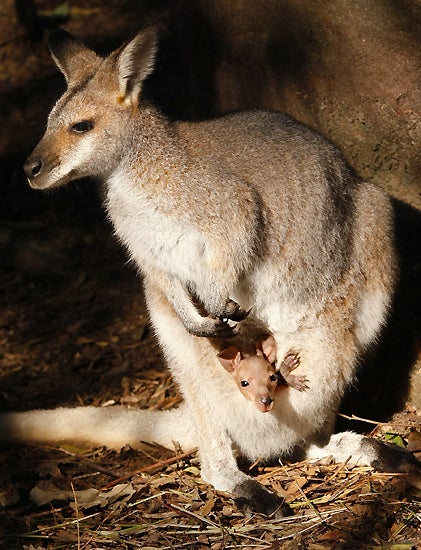Crop circles, poppies - and tripping wallabies

Your support helps us to tell the story
From reproductive rights to climate change to Big Tech, The Independent is on the ground when the story is developing. Whether it's investigating the financials of Elon Musk's pro-Trump PAC or producing our latest documentary, 'The A Word', which shines a light on the American women fighting for reproductive rights, we know how important it is to parse out the facts from the messaging.
At such a critical moment in US history, we need reporters on the ground. Your donation allows us to keep sending journalists to speak to both sides of the story.
The Independent is trusted by Americans across the entire political spectrum. And unlike many other quality news outlets, we choose not to lock Americans out of our reporting and analysis with paywalls. We believe quality journalism should be available to everyone, paid for by those who can afford it.
Your support makes all the difference.Wallabies snacking in opium poppy fields are getting "high as a kite" and hopping around creating crop circles.
Tasmania is the world's largest producer of legally-grown opium for the pharmaceutical market.
Tasmania attorney-general Lara Giddings told a budget hearing yesterday that she recently read about the wallabies in a brief on the state's large poppy industry.
She said: "We have a problem with wallabies entering poppy fields, getting as high as a kite and going around in circles.
"Then they crash. We see crop circles in the poppy industry from wallabies that are high."
A manager for one of two Tasmanian companies licensed to take medicinal products from poppy straw said wildlife and livestock - including deer and sheep - that eat the poppies are known to "act weird".
Tasmanian Alkaloids field operations manager Rick Rockliff said: "There have been many stories about sheep that have eaten some of the poppies after harvesting and they all walk around in circles."
Tasmania supplies about 50 per cent of the world's raw material for morphine and related opiates. About 500 farmers grow the crop on 49,420 acres of land.
Join our commenting forum
Join thought-provoking conversations, follow other Independent readers and see their replies
Comments